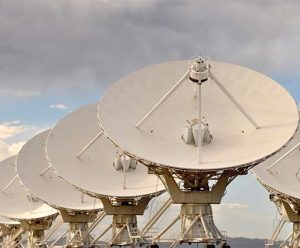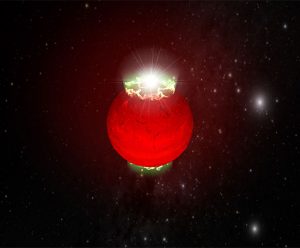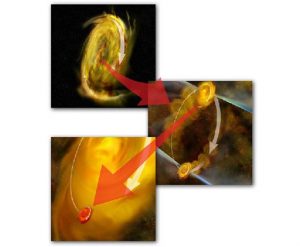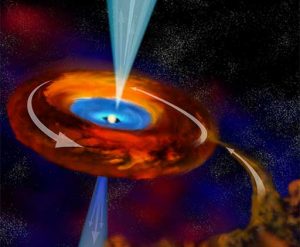High school students and teachers will join astronomers on the cutting edge of science under a program to be operated by the National Radio Astronomy Observatory and West Virginia University, and funded by the National Science Foundation.
Star Cluster Holds Midweight Black Hole, VLA Indicates
Astronomers using the National Science Foundation’s Very Large Array radio telescope have greatly strengthened the case that supermassive black holes at the cores of galaxies may have formed through mergers of smaller black holes.
Brown Dwarfs: A New Class of Stellar Lighthouse
Brown dwarfs, thought just a few years ago to be incapable of emitting any significant amounts of radio waves, have been discovered putting out extremely bright lighthouse beams of radio waves, much like pulsars.
VLA Study Reveals ‘Smoking Gun’
Astronomers have used the National Science Foundation’s Very Large Array radio telescope to image a young, multiple-star system with unprecedented detail, yielding important clues about how such systems are formed.
Cosmic Blasts Much More Common, Astronomers Discover
A cosmic explosion seen last February may have been the tip of an iceberg” showing that powerful, distant gamma ray bursts are outnumbered ten-to-one by less-energetic cousins, according to an international team of astronomers.
New Insight on How Massive Stars Form
Astronomers using the National Science Foundation’s Very Large Array (VLA) radio telescope have discovered key evidence that may help them figure out how very massive stars can form.










